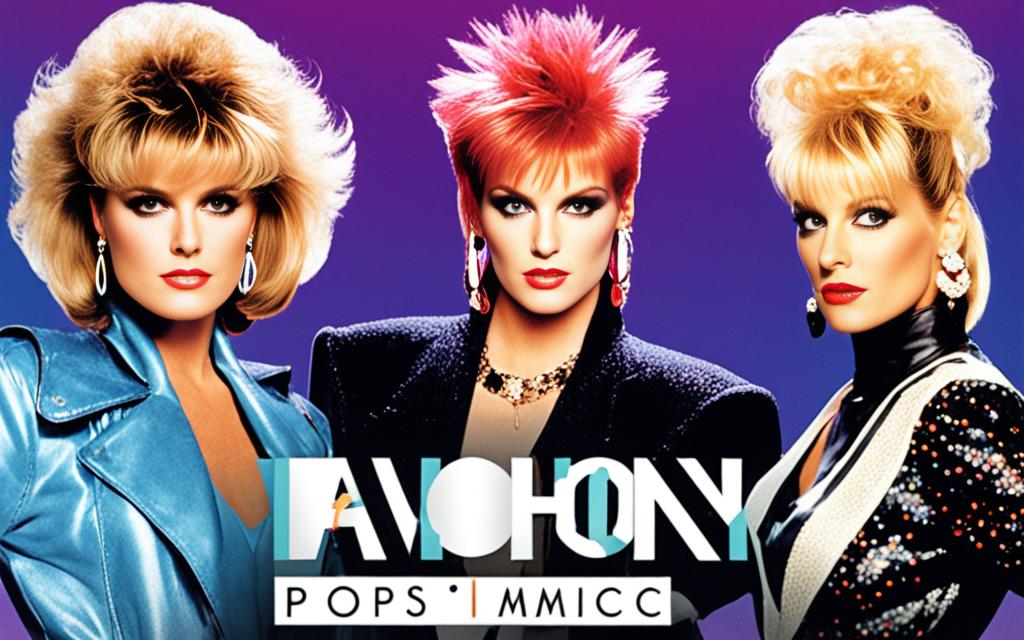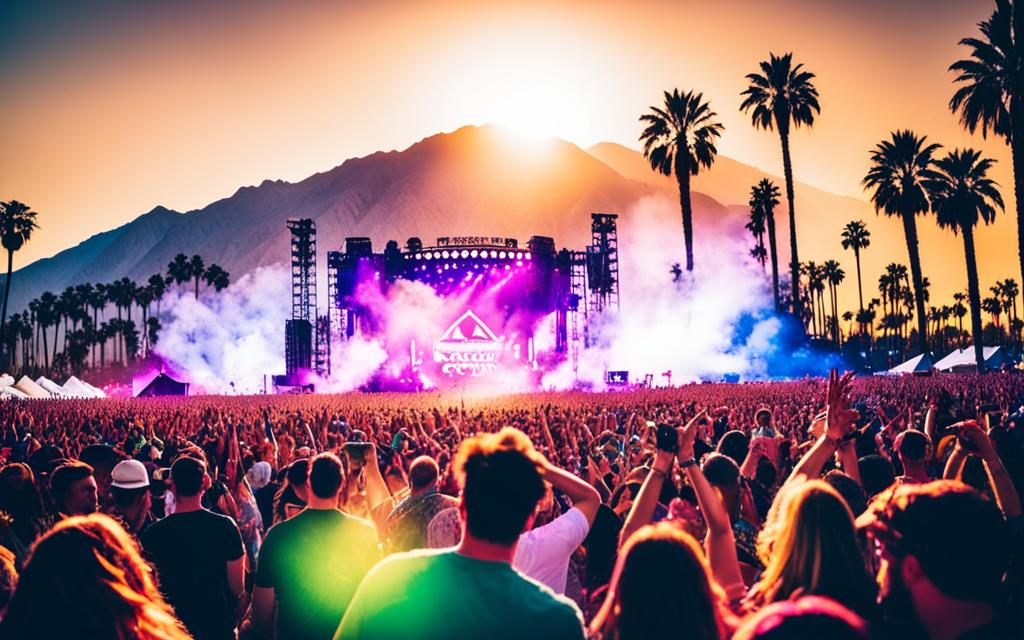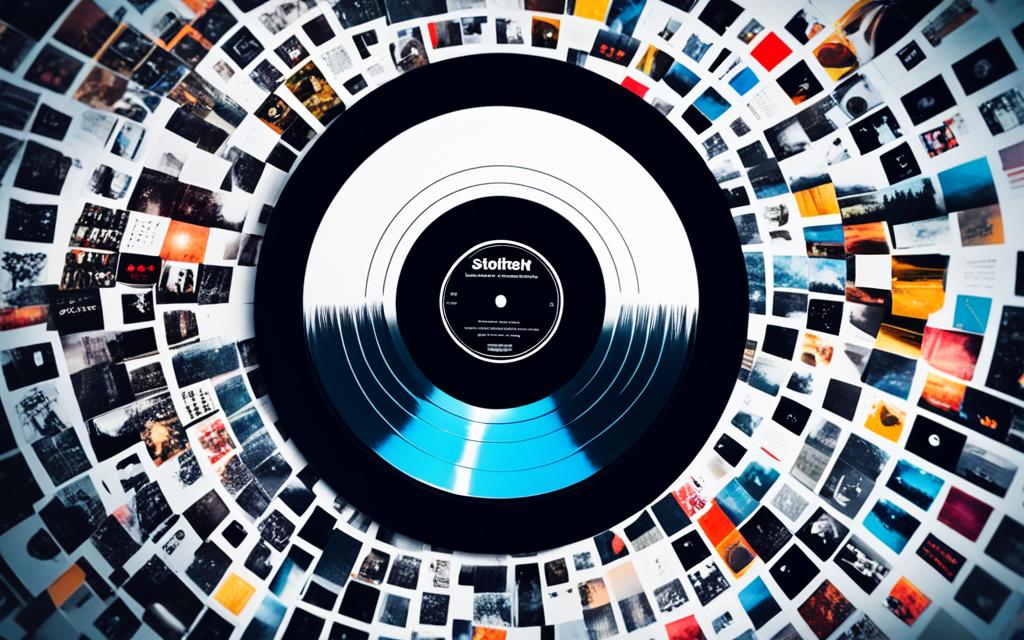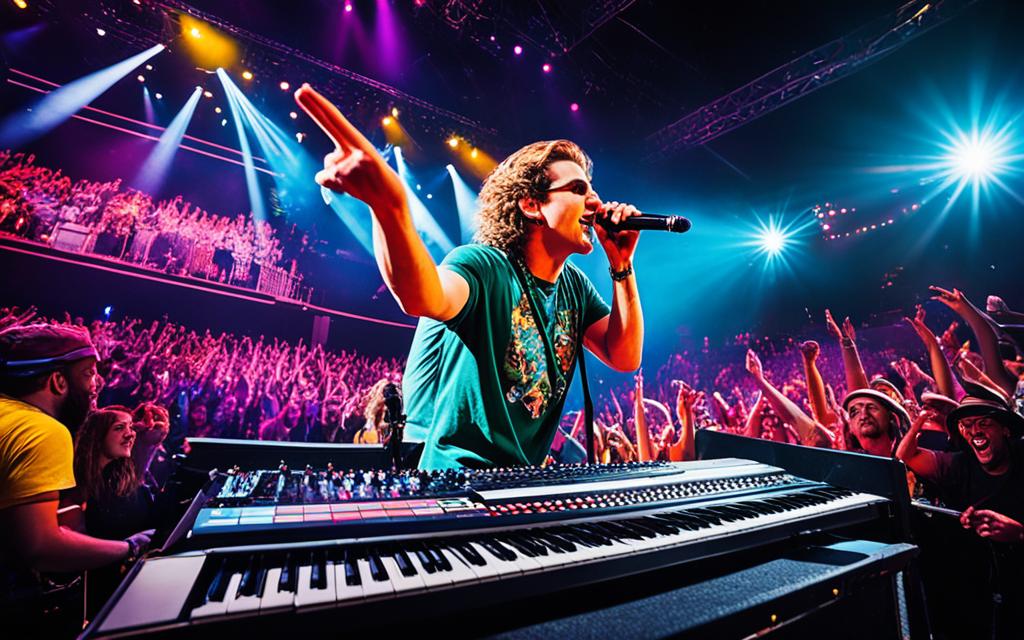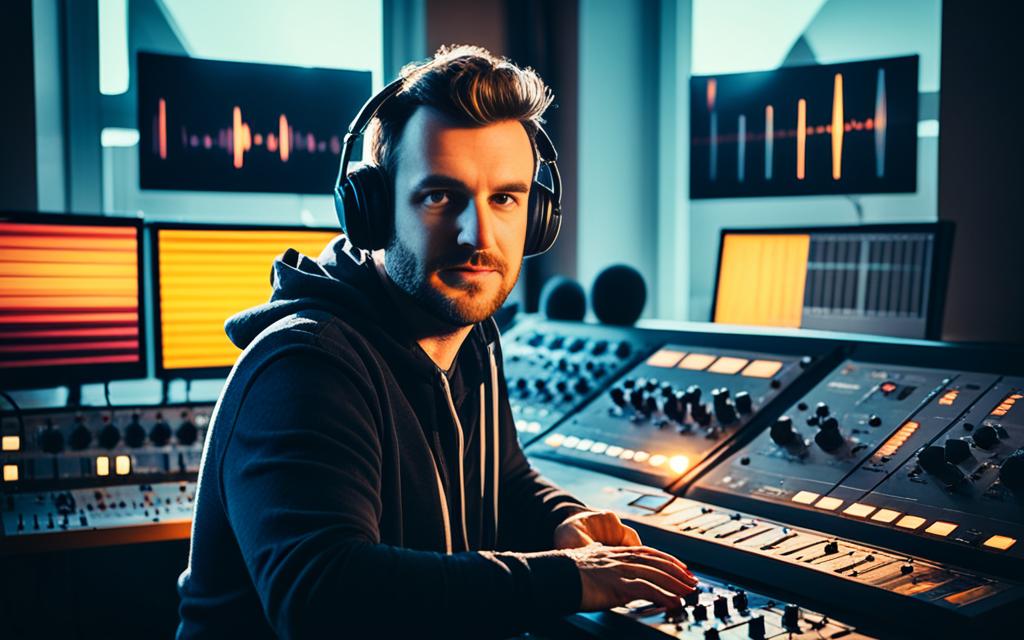Welcome to the exciting world of pop music! In this article, we will take you on a journey through time as we explore the evolution of pop music from the vibrant 80s to the present day. Pop music has always been a cultural phenomenon that constantly evolves, reflecting the changing tastes and trends of society.
Iconic artists, groundbreaking innovations, and catchy melodies have shaped the pop music landscape over the years. From the infectious beats of Madonna and Michael Jackson to the rebellious punk-infused sounds of Prince and Cyndi Lauper, the 80s set the stage for a revolution in popular music.
In the 90s, pop music took on a new dimension with the rise of boy bands like Backstreet Boys and *NSYNC, as well as the emergence of powerhouse divas such as Mariah Carey and Whitney Houston. The genre saw a fusion of different musical styles, including R&B, hip hop, and electronic influences, creating a diverse and dynamic sound.
The turn of the millennium brought about a *digital revolution* that forever changed the music industry. With the introduction of MP3s and streaming platforms like iTunes and Spotify, fans gained unprecedented access to their favorite artists and songs. Traditional album sales gave way to digital downloads and streaming, leading to a seismic shift in how music was consumed.
Fast forward to the 2010s, where pop music continued to evolve and push boundaries. Artists like Taylor Swift and Beyoncé became not only music icons but also cultural influencers, using their platforms to address social issues and redefine the genre. Electronic dance beats, trap-inspired rhythms, and collaborations with artists from different genres became defining features of modern pop music.
As we explore the evolution of pop music in this article, we will delve into the cultural impact it has had on our society. Stay tuned to discover the remarkable journey of a genre that continues to captivate audiences worldwide.
Iconic Artists of the 80s
The 80s was a decade filled with unforgettable music and iconic artists who left an indelible mark on the pop music scene. These artists pushed boundaries, experimented with new sounds, and captured the essence of the era. Let’s take a closer look at some of the most influential figures who defined the sound of the 80s.
Michael Jackson: Known as the King of Pop, Michael Jackson revolutionized the music industry with his innovative dance moves and groundbreaking albums like “Thriller” and “Bad.” His fusion of pop, R&B, and funk created a unique sound that still resonates today.
Madonna: With her bold fashion choices and provocative lyrics, Madonna became a symbol of female empowerment in the 80s. Her hits like “Like a Virgin” and “Material Girl” pushed societal boundaries, making her an unforgettable icon of the era.
Prince: Prince’s genre-defying music effortlessly blended funk, rock, and pop, establishing him as one of the most talented and unique artists of the 80s. His album “Purple Rain” became a soundtrack for a generation and showcased his unmatched artistry.
Whitney Houston: Whitney Houston’s powerful voice and soulful ballads captured the hearts of millions in the 80s. Her chart-topping hits like “Greatest Love of All” and “I Wanna Dance with Somebody” solidified her status as a pop music legend.
Cyndi Lauper: With her vibrant personality and distinctive voice, Cyndi Lauper became a symbol of individuality and self-expression in the 80s. Her breakout hit “Girls Just Want to Have Fun” became an anthem for fun-loving, independent women around the world.
Prince: Prince’s genre-defying music effortlessly blended funk, rock, and pop, establishing him as one of the most talented and unique artists of the 80s. His album “Purple Rain” became a soundtrack for a generation and showcased his unmatched artistry.
Whitney Houston: Whitney Houston’s powerful voice and soulful ballads captured the hearts of millions in the 80s. Her chart-topping hits like “Greatest Love of All” and “I Wanna Dance with Somebody” solidified her status as a pop music legend.
Cyndi Lauper: With her vibrant personality and distinctive voice, Cyndi Lauper became a symbol of individuality and self-expression in the 80s. Her breakout hit “Girls Just Want to Have Fun” became an anthem for fun-loving, independent women around the world.
Legacy and Influence
“The legacy of these iconic artists of the 80s can still be felt in modern pop music. Their groundbreaking work paved the way for future generations of artists and continues to inspire musicians today.”
Pop Music in the 90s
The 90s marked a significant era in the evolution of pop music. This decade witnessed the rise of iconic artists, the birth of new genres, and the advent of technological advancements that transformed the industry.
One of the defining characteristics of pop music in the 90s was the blend of various musical styles, resulting in a diverse range of hits. Genres like pop-rock, pop-R&B, and pop-country gained popularity and dominated the airwaves.
Leading the pack were renowned artists such as Britney Spears, whose debut single “Baby One More Time” became an instant pop culture sensation, and the Spice Girls, whose catchy tracks like “Wannabe” topped charts worldwide. These artists not only shaped the sound of the decade but also established themselves as pop icons.
The 90s also witnessed the emergence of boy bands and girl groups that captured the hearts of millions of fans. Groups like *NSYNC and the Backstreet Boys gained massive international success with their harmonies and synchronized dance routines. Meanwhile, girl groups like TLC and Destiny’s Child dominated the charts, empowering women through their lyrics and performances.
Additionally, the 90s saw the rise of pop divas who showcased their vocal prowess and commanding stage presence. Notable examples include Whitney Houston with her powerful ballads, Madonna with her provocative image and genre-blending music, and Celine Dion with her timeless love songs.
The 90s also witnessed the impact of technology on the music industry. The introduction of CDs and the increasing accessibility of personal computers led to the widespread adoption of digital music. This shift allowed artists and listeners to explore new sounds and expand their musical horizons.
To delve deeper into the diversity and popularity of pop music in the 90s, let’s take a look at some of the key trends and milestones in the following table:
| Year | Key Pop Music Trend/Milestone |
|---|---|
| 1991 | Release of Nirvana’s “Smells Like Teen Spirit,” igniting the grunge movement and influencing alternative pop-rock. |
| 1994 | The pop sensation All-4-One releases “I Swear,” becoming a chart-topper and a wedding favorite. |
| 1997 | The emergence of girl power with the success of the Spice Girls, inspiring a generation of young fans. |
| 1999 | Ricky Martin’s performance of “Livin’ La Vida Loca” at the Grammy Awards solidifies the Latin pop explosion. |
The 90s was undoubtedly a transformative decade for pop music. It embraced diversity, embraced new technologies, and left a lasting impact on the genre’s evolution. Stay tuned for the next section, where we will explore the rise of digital music in the 2000s.
The Rise of Digital Music in the 2000s
With the turn of the millennium came a seismic shift in the music industry. As technology advanced, so did the way we listen to and consume music. The 2000s marked the rise of digital music, forever changing the landscape of pop music.
Online platforms such as iTunes, Spotify, and Napster revolutionized how music was distributed and consumed. The convenience of digital downloads allowed listeners to access their favorite songs with just a few clicks. No longer bound by physical CDs, music became easily accessible, portable, and personalized.
The introduction of online streaming services further propelled the digital music revolution. Services like Pandora and Spotify offered vast libraries of songs that could be streamed on-demand, giving listeners unlimited access to a wide range of music genres and artists. It was a game-changer for pop music, providing unprecedented exposure for both established and emerging artists.
Moreover, the rise of social media platforms created new avenues for artists to connect with their fans and promote their music. Platforms like MySpace, YouTube, and later, Facebook and Instagram, allowed artists to build a loyal following, share their music videos, and engage directly with their audience. The internet became a breeding ground for new talent, democratizing the music industry like never before.
“The digital revolution transformed the music industry, allowing artists to break barriers and connect with audiences on a global scale.” – John Mayer
As digital music became more prevalent, the business models of the industry underwent significant changes. Record labels had to adapt to the new landscape, focusing on partnerships with streaming platforms and leveraging data insights to identify emerging trends and nurture promising talent.
In addition, the rise of digital music in the 2000s also led to a shift in the way pop music was produced. The availability of digital recording software and tools allowed artists to experiment with new sounds and production techniques. It opened up endless possibilities for creativity, resulting in the emergence of innovative sub-genres and new styles of pop music.
| Impact of Digital Music | Key Features |
|---|---|
| Easy accessibility | Listeners could download and listen to music anytime, anywhere. |
| Wide selection | Digital platforms offered an extensive catalog of songs from various genres. |
| Artist-Fan connection | Social media platforms facilitated direct interaction between artists and fans. |
| Music production revolution | New tools and software allowed artists to experiment and innovate. |
The rise of digital music in the 2000s not only transformed the music industry but also shaped the way we experience and engage with pop music. It opened up doors for artists, expanded musical horizons for listeners, and propelled the evolution of pop music into new and exciting directions.
In the next section, we will explore the trends that emerged in pop music during the 2010s, building upon the foundation laid by the digital revolution.
Trends in 2010s Pop Music
In the 2010s, pop music underwent significant transformations, reflecting the changing cultural landscape and technological advancements. This era witnessed the emergence of various trends that reshaped the genre and propelled it to new heights.
Rise of Electronic Dance Music (EDM)
One prominent trend that emerged in the 2010s was the widespread popularity of Electronic Dance Music (EDM). Artists like Calvin Harris, Avicii, and David Guetta brought EDM into the mainstream, fusing infectious beats with catchy melodies that appealed to a broad audience. The evolution of pop music embraced EDM’s energetic and electrifying sound, spurring collaborations between pop stars and EDM producers, resulting in chart-topping hits.
Trap Music Takes Center Stage
Another significant trend in the 2010s was the rise of trap music, known for its heavy bass, 808 drum patterns, and lyrical themes centered around street life and urban culture. Artists such as Future, Travis Scott, and Migos popularized this subgenre, infusing it with elements of pop to create a fresh and innovative sound. The fusion of trap and pop music led to the creation of chart-topping hits like “Bad and Boujee” and “Sicko Mode,” showcasing the versatility and crossover appeal of both genres.
Female Empowerment and Diversity
The 2010s also saw a significant shift in the music industry towards female empowerment and diversity. Female artists like Beyoncé, Taylor Swift, and Rihanna embraced their individuality and used their platforms to address social issues, championing feminism and celebrating diverse identities. This movement fostered inclusivity and paved the way for a new generation of female pop stars who continue to break barriers and challenge societal norms.
Adaptation to Digital Landscape
The rapid advancement of technology in the 2010s brought about a dramatic shift in the way people consume and discover music. Streaming platforms like Spotify and Apple Music became the primary means of accessing music, revolutionizing the industry’s business model. Pop artists had to adapt to this digital landscape, focusing on creating singles and building online fan communities. The rise of social media platforms also played a significant role in promoting and connecting artists with their audience.
The Globalization of Pop
With the advent of social media and streaming platforms, pop music became increasingly global in the 2010s. Artists from different countries and cultures achieved international success, breaking language barriers and resonating with diverse audiences worldwide. K-pop acts like BTS and Blackpink shattered records and dominated charts, showcasing the power of cross-cultural exchange and the impact of globalization on the pop music landscape.
| Trends | Description |
|---|---|
| EDM | The rise of Electronic Dance Music (EDM) brought energetic beats and catchy melodies to the forefront of pop music, resulting in collaborations between pop stars and EDM producers. |
| Trap Music | The fusion of trap music and pop led to the creation of a fresh and innovative sound, characterized by heavy bass, 808 drum patterns, and urban lyrical themes. |
| Female Empowerment | Female artists championed feminism and celebrated diversity, using their platforms to address social issues and inspire a new generation of pop stars. |
| Adaptation to Digital Landscape | Pop artists had to adapt to the rise of streaming platforms and social media, focusing on creating singles and building online fan communities. |
| Globalization of Pop | Pop music became increasingly global, with artists from different countries achieving international success and breaking language barriers. |
Conclusion
In conclusion, we have witnessed the remarkable evolution of pop music from the iconic 80s era to the digital age of today. Through the decades, pop music has continuously transformed, reflecting cultural shifts, technological advancements, and the creative vision of artists. As we look to the future, it is exciting to anticipate how pop music will continue to evolve and shape our cultural landscape.

